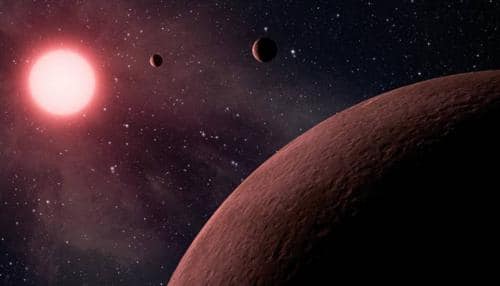- News>
- Space
NASA`s Kepler telescope finds 219 new planet candidates; 10 of which are Earth-like worlds

With the latest release, Kepler has detected a total of 4,034 planet candidates, of which 2,335 have been verified as exoplanets.
New Delhi: NASA's Kepler space telescope has discovered 219 new planet candidates outside our Solar System, 10 of which may be about the same size and temperature as the Earth, indicating the possibility of life.
"Of those, 10 are near-Earth size and orbiting in their star's habitable zone, which is the range of distance from a star where liquid water could pool on the surface of a rocky planet to support life," Xinhua news cited a NASA statement on Monday.
With the latest release, Kepler has detected a total of 4,034 planet candidates, of which 2,335 have been verified as exoplanets.
Of roughly 50 near-Earth size habitable zone candidates detected by Kepler, more than 30 have been verified.
"This is the most comprehensive and detailed catalog release of candidate exoplanets, which are planets outside our solar system, from Kepler's first four years of data," NASA said in a statement.
"It's also the final catalog from the spacecraft's view of the patch of sky in the Cygnus constellation," it said.
The Kepler spacecraft was launched in 2009. Its mission is to search the nearby region of our galaxy for exoplanets by detecting a transit, or the miniscule drop in a star's brightness that occurs when a planet crosses in front of it.
Another study using Kepler data suggested two distinct size groupings of small planets: rocky Earth-like bodies and gaseous planets smaller than Jupiter. Few planets were found between those groupings.
The Kepler spacecraft continues to make observations in new patches of sky in its extended mission, searching for planets and studying a variety of interesting astronomical objects, from distant star clusters to objects such as the TRAPPIST-1 system of seven Earth-size planets, closer to home.
The new findings were presented at a news conference Monday at NASA's Ames Research Center in California's Silicon Valley.
(With IANS inputs)
